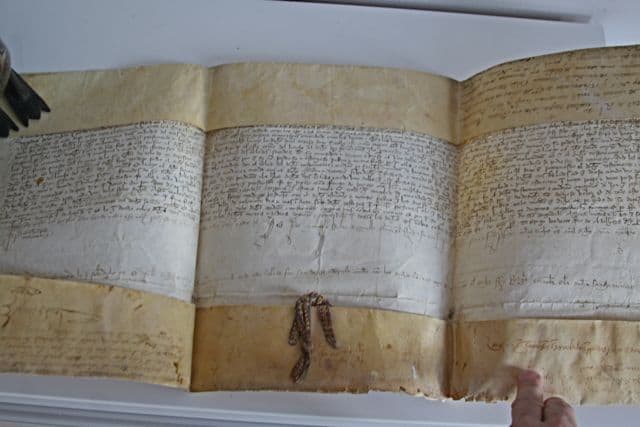January 6, 2010
PRINTED 1478: THE GREAT MEDIEVAL FRANCISCAN TEXT
A Very Rare, Early Incunable and an Unusual Uncut Copy
The Incunable:
[Marchesinus, Johannes ] Mammotrectus super Bibliam. Venice : Franciscus Renner, de Heilbronn, and Petrus de Bartua, 1478. 260 ff., the first blank (later) plus vellum rear blank; 4to., 234 x 172 mm., some occasional minor browning and spotting, but overall a complete, fine, and very pleasing copy. A HIGHLY UNUSUAL UNCUT and UNSOPHITICATED COPY, ENTIRELY UNRUBRICATED AND WITH EXCEEDINGLY LARGE MARGINS, whose sheets likely lain in quires and were never bound before receiving their present 19th century binding of boards and calf with raised bands. Late 15th century blotted inscription to lower margin of a1: “hic liber pertinet ad loci sancti Laurentii de Bibiena, in banco sexto in latere dextro,” stating the precise location of the text in what appears to have been the Library of the Convent housing the Minor Franciscan friars of San Lorenzo in Bibiena, Italy. A medieval manuscript in the Walters Art Museum bears a similar inscription.
“Compiled by a thirteenth-century Franciscan at Reggio, near Modena, the Mammotrectus is a manual for the lower clergy with short entries explaining difficult terms and concepts encountered in the Bible. The homely metaphor of the title refers to the “maternal milk,” or nourishment, offered by this text. Its early popularity did not survive the Reformation; already in May of 1515, Erasmus of Rotterdam had criticized those priests who still depended upon the Mammotrectus. ” {reF; “http://smu.edu/bridwell/specialcollections/schoeffer/mammotrectus.htm”]. The first book from the press of Franciscus Renner de Heilbronn is dated 1471 which might indicate when the German printer began printing in Venice. From 1473 to 1477 he worked in partnership with Nicolaus de Frankfordia, the period under which this work was issued.






